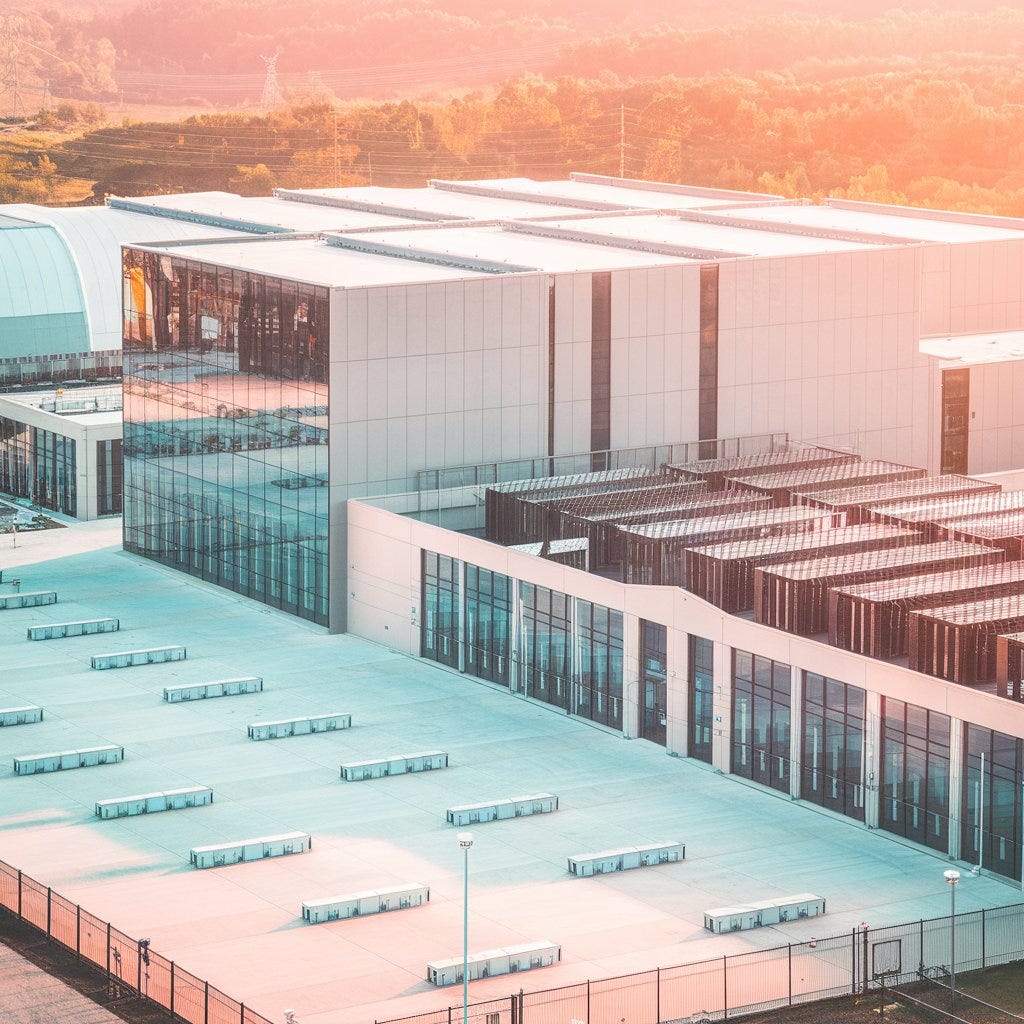Can AI Really Run on 100% Renewable Energy by 2030?
Inside the Global Effort to Align AI Infrastructure with Clean Power, Real-Time Reliability, and Grid Constraints
Welcome to Global Data Center Hub. Join 1800+ investors, operators, and innovators reading to stay ahead of the latest trends in the data center sector in developed and emerging markets globally.
The UN just threw down a challenge: by the end of this decade, every AI data center must run on 100% renewable energy.
It’s more than a climate target.
It’s a test of whether our digital future can align with the laws of physics, the pace of policy, and the reality of the grid.
From Trend to Tipping Point
Artificial intelligence has turned data centers from neutral infrastructure into sovereign-scale power assets.
By 2030, their combined electricity demand could surpass that of Japan not a projection, but a baseload shockwave.
The design priorities have shifted:
From location, latency, and tax
To power how much, how fast, and how clean
This isn’t about going green. It’s about staying online.
The Grid Is the Bottleneck
Renewables are scaling at record speed. In 2024, solar and wind accounted for over 90% of all new global power capacity. Yet nearly 3,000 gigawatts of clean energy remain stalled in interconnection queues.
The bottleneck? Transmission.
Permitting delays and slow grid expansion are outpacing the speed of project development.
In many regions, it now takes longer to connect a renewable energy project than to build a data center.
This growing misalignment isn’t just a planning issue it’s reshaping how AI infrastructure gets built. Site selection, energy pricing, and long-term reliability are increasingly defined by one question:
Can the power get there?
Clean Power Isn’t Always Reliable Power
AI data centers don’t operate in cycles. They run 24/7, with uptime requirements that match the most sensitive sectors in the global economy.
Wind doesn’t blow on demand. Sunlight fades. And today’s batteries don’t yet cover weeks of low output.
This is forcing hyperscalers to pivot. Google is exploring small modular nuclear reactors. Meta is investing in geothermal. Microsoft is sourcing firm power through long-term energy partnerships.
Not because it’s trendy.
Because intermittent power can’t sustain AI-scale compute.
These shifts signal a broader trend toward firm, dispatchable energy sources including nuclear bets like Google’s 1.8GW AI Infrastructure Play and Meta’s recent Nuclear Gambit.
The Scope 3 Reckoning
Most corporate climate pledges zero in on Scope 2 emissions the electricity used during operations. But that’s just a fraction of the full footprint.
Over 90% of emissions from major cloud and AI firms come from Scope 3: the carbon embedded in their supply chains, chips, servers, and building materials.
The UN’s 2030 target, while ambitious, focuses primarily on matching electricity use with renewables.
It largely overlooks the embodied carbon locked into the next wave of data center construction.
In short: we’re cleaning the engine, but the factory still runs on coal.
What Leading Operators Are Doing Differently
The smartest players aren’t choosing between onsite and offsite renewables they’re integrating both.
They’re building layered energy stacks that combine:
Onsite solar, offsite PPAs, battery storage, and backup power
Intelligent dispatch systems that optimize for time-of-day pricing and real-time carbon intensity
In energy-constrained markets, the sequence is shifting. Developers are securing modular power first and building data centers around it.
In this new paradigm, the power strategy is the product.
Why the UN’s Mandate Still Matters
The UN’s 2030 renewables target isn’t just aspirational. It’s an attempt to force alignment between AI’s exponential growth and the climate’s finite carbon budget.
The call puts pressure on national regulators to include AI infrastructure in their energy transition plans. It moves the debate away from accounting tricks and toward operational reality.
It also reframes clean energy not as a checkbox but as a baseline requirement for global competitiveness in the AI era.
A New Hierarchy of Design
Until recently, data center development followed a predictable sequence: secure land, optimize cooling, lock down fiber, and source power last.
That model no longer works.
Today, energy comes first. Without clean, scalable, always-on power, nothing else moves.
This shift is transforming how projects are financed and prioritized.
It’s redrawing site selection maps and turning energy strategy into a board-level concern.
Power is no longer a constraint it’s the starting point.
The Takeaway
The UN’s call for 100% renewables isn’t just about optics.
It’s about setting a bar that forces every AI infrastructure player hyperscaler, investor, regulator, and developer to confront the hard limits of scale, speed, and sustainability.
Whether the industry hits that mark is still uncertain.
But one thing is clear:
If you’re still thinking like a data center tenant, you’ve already fallen behind.
To lead in this next cycle, you must think like a power developer.
And act like time is running out.
The next generation of leaders won’t just deploy compute they’ll build energy-first ecosystems, as we’re already seeing in How Flare Gas Is Fueling AI, Bitcoin, and Beyond.


no.
AI is not an app. It's an infrastructure shift. And like all infrastructure, it bends to physics, financing, and politics, not press releases.
By 2030, some AI data centers will run on 100% renewables. But most won’t. The real transition will be messy, hybrid, and regional. Nuclear and geothermal will fill gaps. LDES might get there in the second half of the decade. Efficiency will help, but not reverse the curve.
This isn’t failure. It’s the truth of systems engineering. And the sooner we adapt our strategy to reality, the faster we get to real progress.